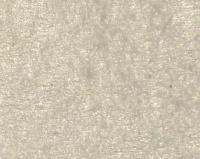Window insulation
Windows are the main areas of heat loss in most houses, and are usually easy & cheap to insulate.
Draughtproofing
Should be done before any other insulation. In most cases, cheap, easy & effective.
Most windows can be draughtproofed using foam tape. Cheap foam doesn't last well, EPDM does.
Metal windows
Old Crittall metal windows usually have far more layers of paint on than they were designed to work with. A strip and repaint can much improve them. If further draughtproofing is needed, one way is to apply silicone to one surface and close the other onto it after applying clingfilm. Silicone isn't the most robust stuff though. When set, remove clingfilm with care and apply clear tape to the face of the silicone to stop it sticking, and trim.
Sliding sash windows
These are best draughtproofed by
- remove beading & remove sliding sashes
- route a groove around 3 edges
- route a groove across the outer face of the top of the bottom sash
- fit lightweight flexible plastic strips in the grooves
- refit windows
Brushbars can also be used, but make window movement stiff.
Leaded lights
Old lead lights are often very draughty.
- Ensure the leadwork is tied to any iron reinforcement bar(s) fitted to prevent movement.
- Brush the leadwork with linseed putty to fill any gaps between lead and glass
- Apply chalk and rub off with cloth
Insulation options
All the following reduce window heat loss. If you're determined, the more insulation measures used the better.
Double glazing
Double glazing much reduces heat loss, but its cost generally makes retrofitting it not pay back. If you need to replace the window anyway, the extra cost of dg is worth it.
Secondary glazing
Cheaper than double glazing, and easy to fit. means better payback than double glazing. Secondary glazing is generally well suited to use where existing windows form an important part of the building's character.
Secondary glazing can be done in
- glass - tough but breakable
- acrylic sheet - quite long lived, impact resistant. Can scratch though
- plastic film - very cheap, limited life, easily torn
Secondary glazing can be fitted
- onto the opening sashes
- onto the outer window frame
- or spaced away from the frame
Usually its best to fit it to the sashes, as fitting to the outer frame prevents easy opening of windows. But in the case of metal windows (steel and leaded lights) the heat loss of the frame is so poor that secondary glazing is best fitted spaced off the window frame. It can be fitted to a new light timber frame fitted into the wall recess.
Secondary glazing is sometimes fitted without draughtproofing first. When this is done it then acts more like draughtproofing, losing much of its insulating value.
Insulation figures for secondary glazing are much the same as for basic air gapped double glazing. But the airgap varies in size, varying insulation level some. Imperfect sealing can reduce insulation a bit too.
Secondary glazing sometimes forms condensation, which can lead to wood rot. If this occurs, just wipe it off. To avoid condensation for a winter, or an entire year, you can add a 100g-250g bag of silica gel where necessary.
Where acrylic is used to span multiple panes (eg, 3) its worth buying 4mm and not 3mm despite the higher cost, to avoid the centre bowing into the room.
If secondary glazing that's not easily removed is used, its worth cleaning everything inaccessible thoroughly before fitting.
Companies exist that do very discreet secondary glazing for period properties.
Curtain
Curtains reduce night time heat loss. To maximise effect, close the gaps round the curtains as well as possible to minimise air movement.
- curtain bottom should be close to the cill or floor
- sides can be velcroed to the frame
- curtain top can be pelmetted
Curtain lining
Lined curtains can roughly halve the heat loss of a single glazed window.
Curtain thermal lining
A fleecy thermal lining to curtains improves their insulation further. If you only want something very temporary, a blanket clothespegged in place also works.
Thermally lined close fitting curtains & pelmet can add insulation of R= 0.3
Secondary film curtain
A small lightweight secondary curtain rod is fitted close to the window, and a clear plastic fim curtain hung on it. Less effective than secondary glazing, but can be added easily to just about any window, and doesn't obstruct it. Fit soft thick string along the bottom so it hangs properly.
Secondary curtain
The same as the above can be done with a curtain lining. It hangs better and is more robust, but of course it only insulates at night.
Shutters
Shutters provide the ultimate insulation at night, if they're made of thick insulation sheet and draughtproofed. Old fashioned wood shutters also help, but rather less.
Triple glazing
When putting in new windows, TG doesn't cost a lot more than DG. The increased weight can be an issue.
Tertiary glazing
Adding a 3rd layer over double glazing improves things further.
Greenhouses
Greenhouses can use 2 more methods:
Insulation figures
R values for windows:
- Single glazing: 0.18
- Double glazing, basic air filled: 0.35
- Double glazing, coated & argon filled: 0.5
- Triple glazing, basic air filled: 0.52
- Triple glazing, coated & argon filled:
